Sustainable and Special Economic Zone Selection under Fuzzy Environment: A Case of Pakistan
Abstract
1. Introduction
2. Background
2.1. Key Factors of SEZs
2.2. SEZs under the CPEC Project
3. Materials and Methods
3.1. Factor Identification and Enrichment by Delphi Method
3.2. Analytical Hierarchy Process
- Step I.
- The hierarchical decision problem is comprised of four levels such as goal, criteria, sub-criteria, and alternatives. Each of the levels is interconnected with each other in order to establish a hierarchical decision solution.
- Step II.
- Analyzing the hierarchical structure, the data of the decision problem is collected from the experts based on the pairwise comparisons matrix on a Saaty’s numerical scale (Table 5).
- Step III.
- The consistency of the pairwise comparisons matrix is assessed through a consistency index (CI). The CI is calculated as:where, is the eigenvalue of the judgment/priority matrix and is the number of elements. The value of CI can be compared with a random index (RI). So, the consistency ratio (CR) is computed as:where RI is the random consistency index. The value of CR must be within the range of 0.10, if it exceeds the value from 0.10, then the CR should be undertaken again [77].
3.3. Fuzzy VIKOR
- Step I.
- Fuzzy decision matrix for n criteria and m alternatives may be written as:
- Step II.
- The next step is to determine the fuzzy best value () and the fuzzy worst value () for each criterion:
- Step III.
- The fuzzy separation values and are estimated as:
- Step IV.
- The values , , , and are estimated as:
- Step V.
- The next step is to defuzzify the triangular fuzzy numbers.
- Step VI.
- The alternatives are arranged in descending order according to their respective value. The alternative with minimum value is deemed to be the best alternative.
4. Results of the Analyses
4.1. Results of Main Criteria (AHP)
4.2. Results of Main Criteria (AHP)
4.3. Overall Sub-Criteria Results (AHP)
4.4. Results of Alternatives (Fuzzy VIKOR)
5. Discussion
6. Conclusions
Author Contributions
Funding
Conflicts of Interest
References
- Zia, M.M.; Waqar, S.; Malik, B.A. Special Economic Zones (SEZs): A Comparative Analysis for CPEC SEZs in Pakistan. Pakistan J. Soc. Sci. 2018, 9, 37–60. [Google Scholar]
- Anwar, S. Special Economic Zones (SEZs) and CPEC: Background, Challenges and Strategies. J. Pakistan Vis. 2015, 16, 142–163. [Google Scholar]
- Sosnovskikh, S. Industrial Clusters in Russia: The Development of Special Economic Zones and Industrial Parks. Russ. J. Econ. 2017, 3, 174–199. [Google Scholar] [CrossRef]
- Janjua, S.; Khan, A.; Asif, N. Sustainable Urban Development and SEZs Consideration for China Pakistan Economic Corridor; Working Paper No. 014/2017; Centre of Excellence, China-Pakistan Economic Corridor: Islamabad, Pakistan, 2018. [Google Scholar]
- Dorożyński, T.; Świerkocki, J.; Urbaniak, W. Determinants of Investment Attractiveness of Polish Special Economic Zones. Entrep. Bus. Econ. Rev. 2018, 6, 161–180. [Google Scholar] [CrossRef]
- Mahmood, Z. Strategic Transformation of the Pakistan Economy through SEZS-A Pragmatic Approach. In Green Book; Pakistan Army: Rawalpindi, Pakistan, 2019; pp. 78–90. [Google Scholar]
- Pakdeenurit, P.; Suthikarnnarunai, N.; Rattanawong, W. Location and Key Success Factors of Special Economic Zone in Thailand. Mark. Brand. Res. 2017, 4, 169–178. [Google Scholar] [CrossRef]
- Jankowska, B. Clusters on the Road to Internationalization—Evidence from a CEE Economy. Compet. Rev. 2016, 26, 395–414. [Google Scholar] [CrossRef]
- Zeng, D.Z. Special Economic Zones: Lessons from the Global Experience; PEDL Synthesis Paper Seris No. 1; Private Enterprise Development in Low Income Contries (PEDL): Warwick, UK, 2016. [Google Scholar]
- Akinci, G.; Crittle, J. Special Economic Zones: Performance, Lessons Learned, and Implications for Zone Development; The World Bank: Washington, DC, USA, 2008. [Google Scholar]
- Böhmer, A.; Farid, N. Stocktaking of Good Practices for Economic Zone Development MENA-OECD Good Practice; MENA-OECD Investment Programme: Paris, France, 2009. [Google Scholar]
- Asian Development Bank. Environmentally Sustainable Growth: A Strategic Review; Topical Paper; Asian Development Bank: Mandaluyong, Metro Manila, Philippines, 2016. [Google Scholar]
- Kechichian, E.; Jeong, M.H. Mainstreaming Eco-Industrial Parks; The World Bank: Washington, DC, USA, 2016. [Google Scholar]
- Ali, S.; Xu, H.; Al-amin, A.Q.; Ahmad, N. Energy Sources Choice and Environmental Sustainability Disputes: An Evolutional Graph Model Approach. Qual. Quant. 2019, 53, 561–581. [Google Scholar] [CrossRef]
- Singh, T.K.; Sanjeev, D. Case Study: Assessment of SEZ Location Impact on Business Development in Madhya Pradesh, India. Adv. Manag. 2019, 12, 3–28. [Google Scholar]
- Aggarwal, A. SEZs and Economic Transformation: Towards a Developmental Approach. Transnatl. Corp. 2019, 26, 27–47. [Google Scholar] [CrossRef]
- Kim, E.J. China’s Green Special Economic Zone Policies—Development and Implementation; Global Green Growth Institute: Seol, Korea, 2017. [Google Scholar]
- Qinghe, L.; Fang, W.; Zhenfeng, Z.; Xiao, K. Studies on China’s Special Economic Zones; Yuan, Y., Ed.; Research Series on the Chinese Dream and China’s Development Path; Springer: Singapore, 2017. [Google Scholar]
- Zeng, D.Z. Global Experiences of Special Economic Zones with Focus on China and Africa: Policy Insights. J. Int. Commer. Econ. Policy 2016, 7, 1–17. [Google Scholar] [CrossRef]
- Wong, M.D.; Buba, J. Special Economic Zones: An Operational Review of Their Impacts; World Bank: Washington, DC, USA, 2017; pp. 1–174. [Google Scholar]
- Qadir, S.; Liang, Z. The Challenges and Opportunities for Development of Special Economic Zones (SEZ) in Central Asia and PRC: Sharing the Policy Experiences and Lessons; CAREC Institute: Urumqi, China, 2019. [Google Scholar]
- Ahmed, W.; Tan, Q.; Ali, S. Strategic Negotiation for Resolving Infrastructure Development Disputes in the Belt and Road Initiative. In Group Decision and Negotiation in an Uncertain World: 18th International Conference, GDN 2018; Chen, Y., Kersten, G., Vetschera, R., Xu, H., Eds.; Lecture Notes in Business Information Processing; Springer: Cham, Switzerland, 2018; Volume 315. [Google Scholar]
- Abbas, A.; Ali, S. Nine Proposed Priority SEZs under CPEC & SEZ Act; An Approach to Industrial Development; Working Paper No. 016/2017; Centre of Excellence, China-Pakistan Economic Corridor: Islamabad, Pakistan, 2018. [Google Scholar]
- Ambroziak, A.A.; Hartwell, C.A. The Impact of Investments in Special Economic Zones on Regional Development: The Case of Poland. Reg. Stud. 2018, 52, 1322–1331. [Google Scholar] [CrossRef]
- Ikram, A.; Su, Q.; Fiaz, M.; Rehman, R.U. Cluster Strategy and Supply Chain Management The Road to Competitiveness For. Benchmarking Int. J. 2018, 25, 1302–1318. [Google Scholar] [CrossRef]
- Barbieri, E.; Rodolfo, M.; Tommaso, D.; Tassinari, M.; Marozzi, M.; Barbieri, E. Selective Industrial Policies in China: Investigating the Choice of Pillar Industries. Int. J. Emerg. Mark. 2019. [Google Scholar] [CrossRef]
- Sharma, N.K. Special Economic Zones: Socio-Economic Implications. Econ. Political Wkly. 2009, 44, 18–21. [Google Scholar]
- Jensen, C.; Winiarczyk, M. Special Economic Zones—20 Years Later; CASE Research Paper No. 467/2014; Center for Social and Economic Research: Warsaw, Poland, 2014. [Google Scholar]
- Kim, J.U.; Aguilera, R.V. Foreign Location Choice: Review and Extensions. Int. J. Manag. Rev. 2016, 18, 133–159. [Google Scholar] [CrossRef]
- Makabenta, M.P. FDI Location and Special Economic Zones in the Philippines. Rev. Urban Reg. Dev. Stud. 2002, 14, 59–77. [Google Scholar] [CrossRef]
- Shakya, M. Clusters for Competitiveness: A Practical Guide and Policy Implications for Developing Cluster Initiatives; The World Bank: Washington, DC, USA, 2009. [Google Scholar]
- Januškait, V. Intellectual Capital as a Factor of Sustainable Regional Competitiveness. Sustainability 2018, 10, 4848. [Google Scholar] [CrossRef]
- Mir, K.A.; Purohit, P.; Mehmood, S. Sectoral Assessment of Greenhouse Gas Emissions in Pakistan. Environ. Sci. Pollut. Res. 2017, 24, 27345–27355. [Google Scholar] [CrossRef]
- Wang, K.-J.; Lestari, Y.D.; Yang, T.-T. Location Determinants of Market Expansion in China’ s Second-Tier Cities: A Case Study of The. J. Bus. Ind. Mark. 2015, 30, 139–152. [Google Scholar] [CrossRef]
- Piersiala, L. Influence of Special Economic Zones on the Investment Activities of Enterprises. Organ. Manag. Q. 2018, 2, 41–49. [Google Scholar]
- Aggarwal, A. Promoting Food Processing through Food Parks and Food Processing Special Economic Zones: The Indian Experience. In Innovative Institutions, Public Policies And Private Strategies for Agro-Enterprise Development; Ralph, C., Da Silva, C., Mhlanga, A.N., Mabaya, E., Tihanyi, K., Eds.; World Scientific: Singapore, 2014; pp. 189–219. [Google Scholar]
- Asian Development Bank. Asian Economic Integration Report 2015; Asian Development Bank: Manila, Philippines, 2015. [Google Scholar]
- Kiani, K. Four Key Areas under CPEC Prioritised. Dawn, 15 January 2019. [Google Scholar]
- Ziemba, P. Towards Strong Sustainability Management—A Generalized PROSA Method. Sustainability 2019, 11, 1555. [Google Scholar] [CrossRef]
- Ziemba, P.; Wa̧tróbski, J.; Zioło, M.; Karczmarczyk, A. Using the PROSA Method in Offshore Wind Farm Location Problems. Energies 2017, 10, 1755. [Google Scholar] [CrossRef]
- Ziemba, P. NEAT F-PROMETHEE—A New Fuzzy Multiple Criteria Decision Making Method Based on the Adjustment of Mapping Trapezoidal Fuzzy Numbers. Expert Syst. Appl. 2018, 110, 363–380. [Google Scholar] [CrossRef]
- Solangi, Y.A.; Shah, S.A.A.; Zameer, H.; Ikram, M.; Saracoglu, B.O. Assessing the Solar PV Power Project Site Selection in Pakistan: Based on AHP-Fuzzy VIKOR Approach. Environ. Sci. Pollut. Res. 2019, 26, 30286–30302. [Google Scholar] [CrossRef]
- Wang, Y.; Xu, L.; Solangi, Y.A. Strategic Renewable Energy Resources Selection for Pakistan: Based on SWOT-Fuzzy AHP Approach. Sustain. Cities Soc. 2020, 52, 101861. [Google Scholar] [CrossRef]
- Shah, S.A.A.; Solangi, Y.A.; Ikram, M. Analysis of Barriers to the Adoption of Cleaner Energy Technologies in Pakistan Using Modified Delphi and Fuzzy Analytical Hierarchy Process. J. Clean. Prod. 2019, 235, 1037–1050. [Google Scholar] [CrossRef]
- Xu, L.; Wang, Y.; Shah, S.A.; Zameer, H.; Solangi, Y.A.; Walasai, G.D.; Siyal, Z.A. Economic Viability and Environmental Efficiency Analysis of Hydrogen Production Processes for the Decarbonization of Energy Systems. Processes 2019, 7, 494. [Google Scholar] [CrossRef]
- Solangi, Y.A.; Tan, Q.; Mirjat, N.H.; Ali, S. Evaluating the Strategies for Sustainable Energy Planning in Pakistan: An Integrated SWOT-AHP and Fuzzy-TOPSIS Approach. J. Clean. Prod. 2019, 236, 117655. [Google Scholar] [CrossRef]
- Akrich, M.; Callon, M.; Latour, B.; Monaghan, A. The Key To Success in Innovation Part II: The Art Of Choosing Good Spokespersons. Int. J. Innov. Manag. 2002, 6, 187–206. [Google Scholar] [CrossRef]
- Solangi, Y.A.; Tan, Q.; Mirjat, N.H.; Das Valasai, G.; Khan, M.W.A.; Ikram, M. An Integrated Delphi-AHP and Fuzzy TOPSIS Approach toward Ranking and Selection of Renewable Energy Resources in Pakistan. Processes 2019, 7, 118. [Google Scholar] [CrossRef]
- World Bank. Special Economic Zones: Performance, Lessons Learned and Implications for Zone Development; The Multi-Donor Investment Climate Advisory Service of the World Bank Group; The World Bank Group: Washington, DC, USA, 2008. [Google Scholar]
- International Crisis Group (ICG). China-Pakistan Economic Corridor: Opportunities and Challenges; Report No. 297; ICG: Brussels, Belgium, 2018. [Google Scholar]
- Zia, M.M.; Malik, B.A.; Waqar, S. Special Economic Zones (SEZS) a Comparative Analysis for Cpec Sezs in Pakistan; Centre of Excellence for CPEC: Islamabad, Pakistan, 2017; p. 12. [Google Scholar]
- Javed, S.H. Establishing Special Economic Zones in Pakistan: Learning from China’s Experience; The National University of Science and Technology (NUST): Islamabad, Pakistan, 2015. [Google Scholar]
- Crosston, M. Exploring the Belt and Road Initiative; The Bridge: Athens, Greece, 2019. [Google Scholar]
- Feng, J.; Zhao, L.; Jia, H.; Shao, S. Silk Road Economic Belt Strategy and Industrial Evidence from Chinese Industries. Manag. Environ. Qual. Int. J. 2019, 30, 260–282. [Google Scholar] [CrossRef]
- Ashraf, H.; Cawood, F.; Ashraf, H.; Cawood, F. A New Mineral Policy Development Framework for Pakistan. J. Sci. Technol. Policy Manag. 2019, 10, 457–490. [Google Scholar] [CrossRef]
- Papadopoulos, N.; Hamzaoui-essoussi, L.; El Banna, A.; Papadopoulos, N.; Hamzaoui-essoussi, L.; El Banna, A. Nation Branding for Foreign Direct Investment: An Integrative Review and Directions for Research and Strategy. J. Prod. Brand Manag. 2016, 25, 615–628. [Google Scholar] [CrossRef]
- Usman, M. Mapping the China-Pakistan Economic Corridor. Reconnecting Asia, 29 June 2019. [Google Scholar]
- Rana, S.; Barring, K.-P. Provinces Refuse to Subsidise CPEC’s SEZs. The Express Tribune, 1 May 2018. [Google Scholar]
- Chen, X.; Joseph, S.; Tariq, H. Betting Big on CPEC. Eur. Financ. Rev. 2018, 1–15, 61–70. [Google Scholar]
- Davies, R.B.; Edwards, T.H.; Mazhikeyev, A. The Impact of Special Economic Zones on Electricity Intensity of Firms. Energy J. 2018, 39, 5–24. [Google Scholar] [CrossRef]
- Skulmoski, G.J.; Hartman, F.T. The Delphi Method for Graduate Research. J. Inf. Technol. Educ. 2007, 6, 1–21. [Google Scholar] [CrossRef]
- Vidal, L.; Marle, F.; Bocquet, J. Expert Systems with Applications Using a Delphi Process and the Analytic Hierarchy Process (AHP) to Evaluate the Complexity of Projects. Expert Syst. Appl. 2011, 38, 5388–5405. [Google Scholar] [CrossRef]
- Vafaeipour, M.; Zolfani, S.; Mohammad, V.; Derakhti, A.; Eshkalag, M. Assessment of Regions Priority for Implementation of Solar Projects in Iran: New Application of a Hybrid Multi-Criteria Decision Making Approach. Energy Convers. Manag. 2014, 86, 653–663. [Google Scholar] [CrossRef]
- Dajani, J.S.; Sincoff, M.Z.; Talley, W.K. Stability and Agreement Criteria for the Termination of Delphi Studies. Technol. Forecast. Soc. Chang. 1979, 13, 83–90. [Google Scholar] [CrossRef]
- Lawshe, C.H. A Quantitative Approach To Content Validity. Pers. Psychol. 1975, 28, 563–575. [Google Scholar] [CrossRef]
- Wilson, F.R.; Pan, W.; Schumsky, D.A. Recalculation of the Critical Values for Lawshe’s Content Validity Ratio. Meas. Eval. Couns. Dev. 2012, 45, 197–210. [Google Scholar] [CrossRef]
- Saaty, T.L. The Analytic Hierarchy Process; McGraw-Hill: New York, NY, USA, 1980. [Google Scholar]
- Solangi, Y.A.; Tan, Q.; Khan, M.W.A.; Mirjat, N.H.; Ahmed, I. The Selection of Wind Power Project Location in the Southeastern Corridor of Pakistan: A Factor Analysis, AHP, and Fuzzy-TOPSIS Application. Energies 2018, 11, 1940. [Google Scholar] [CrossRef]
- Forman, E.; Peniwati, K. Aggregating Individual Judgments and Priorities with the Analytic Hierarchy Process. Eur. J. Oper. Res. 1998, 108, 165–169. [Google Scholar] [CrossRef]
- Kahraman, C.; Cebeci, U.; Ruan, D. Multi-Attribute Comparison of Catering Service Companies Using Fuzzy AHP: The Case of Turkey. Int. J. Prod. Econ. 2004, 87, 171–184. [Google Scholar] [CrossRef]
- Ostrosi, E.; Haxhiaj, L.; Fukuda, S. Fuzzy Modelling of Consensus during Design Conflict Resolution. Res. Eng. Des. 2012, 23, 53–70. [Google Scholar] [CrossRef]
- Aydogan, E.K. Performance Measurement Model for Turkish Aviation Firms Using the Rough-AHP and TOPSIS Methods under Fuzzy Environment. Expert Syst. Appl. 2011, 38, 3992–3998. [Google Scholar] [CrossRef]
- Weng, S.-S.; Chen, K.-Y.; Li, C.-Y. Application of the Analytic Hierarchy Process and Grey Relational Analysis for Vendor Selection of Spare Parts Planning Software. Symmetry 2019, 11, 1182. [Google Scholar] [CrossRef]
- Zyoud, S.H.; Kaufmann, L.G.; Shaheen, H.; Samhan, S.; Fuchs-Hanusch, D. A Framework for Water Loss Management in Developing Countries under Fuzzy Environment: Integration of Fuzzy AHP with Fuzzy TOPSIS. Expert Syst. Appl. 2016, 61, 86–105. [Google Scholar] [CrossRef]
- Ahmed, W.; Tan, Q.; Ali, S.; Ahmad, N. Addressing Environmental Implications of Crop Stubble Burning in Pakistan: Innovation Platforms as an Alternative Approach. Int. J. Glob. Warm. 2019, 19, 76–93. [Google Scholar] [CrossRef]
- Saaty, T.L. How to Make a Decision: The Analytic Hierarchy Process. Eur. J. Oper. Res. 1990, 48, 9–26. [Google Scholar] [CrossRef]
- Hussain Mirjat, N.; Uqaili, M.; Harijan, K.; Mustafa, M.; Rahman, M.; Khan, M. Multi-Criteria Analysis of Electricity Generation Scenarios for Sustainable Energy Planning in Pakistan. Energies 2018, 11, 757. [Google Scholar] [CrossRef]
- Opricovic, S.; Tzeng, G.H. Extended VIKOR Method in Comparison with Outranking Methods. Eur. J. Oper. Res. 2007, 178, 514–529. [Google Scholar] [CrossRef]
- Opricovic, S.; Tzeng, G.H. Compromise Solution by MCDM Methods: A Comparative Analysis of VIKOR and TOPSIS. Eur. J. Oper. Res. 2004, 156, 445–455. [Google Scholar] [CrossRef]
- Öztayşi, B.; Sürer, Ö. Supply Chain Management Under Fuzziness. In Supply Chain Management Under Fuzziness; Springer: Berlin/Heidelberg, Germany, 2014; Volume 313, pp. 199–224. [Google Scholar]
- Sofiyabadi, J.; Kolahi, B.; Valmohammadi, C. Key Performance Indicators Measurement in Service Business: A Fuzzy VIKOR Approach. Total Qual. Manag. Bus. Excell. 2016, 27, 1028–1042. [Google Scholar] [CrossRef]
- Kaya, T.; Kahraman, C. Multicriteria Renewable Energy Planning Using an Integrated Fuzzy VIKOR & AHP Methodology: The Case of Istanbul. Energy 2010, 35, 2517–2527. [Google Scholar]
- Wen, Y. The Making of an Economic Superpower—Unloking China’s Secret of Rapid Industrialization; World Scientific Publishers: Singapore, 2016. [Google Scholar]
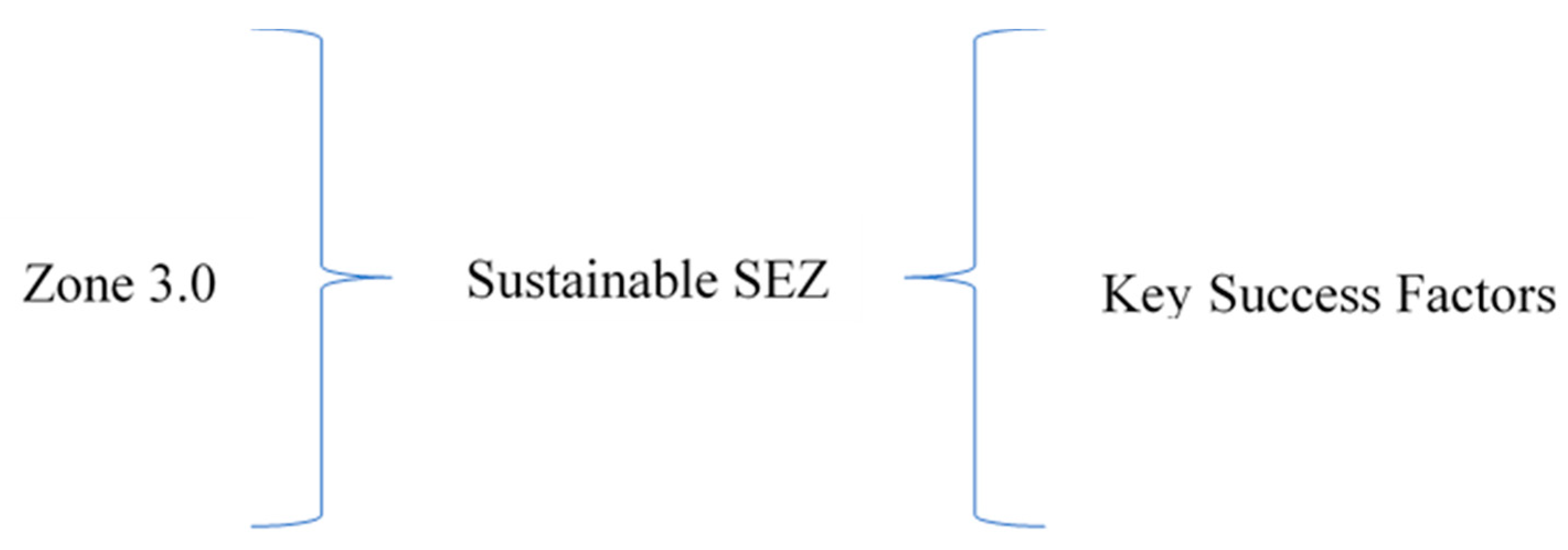
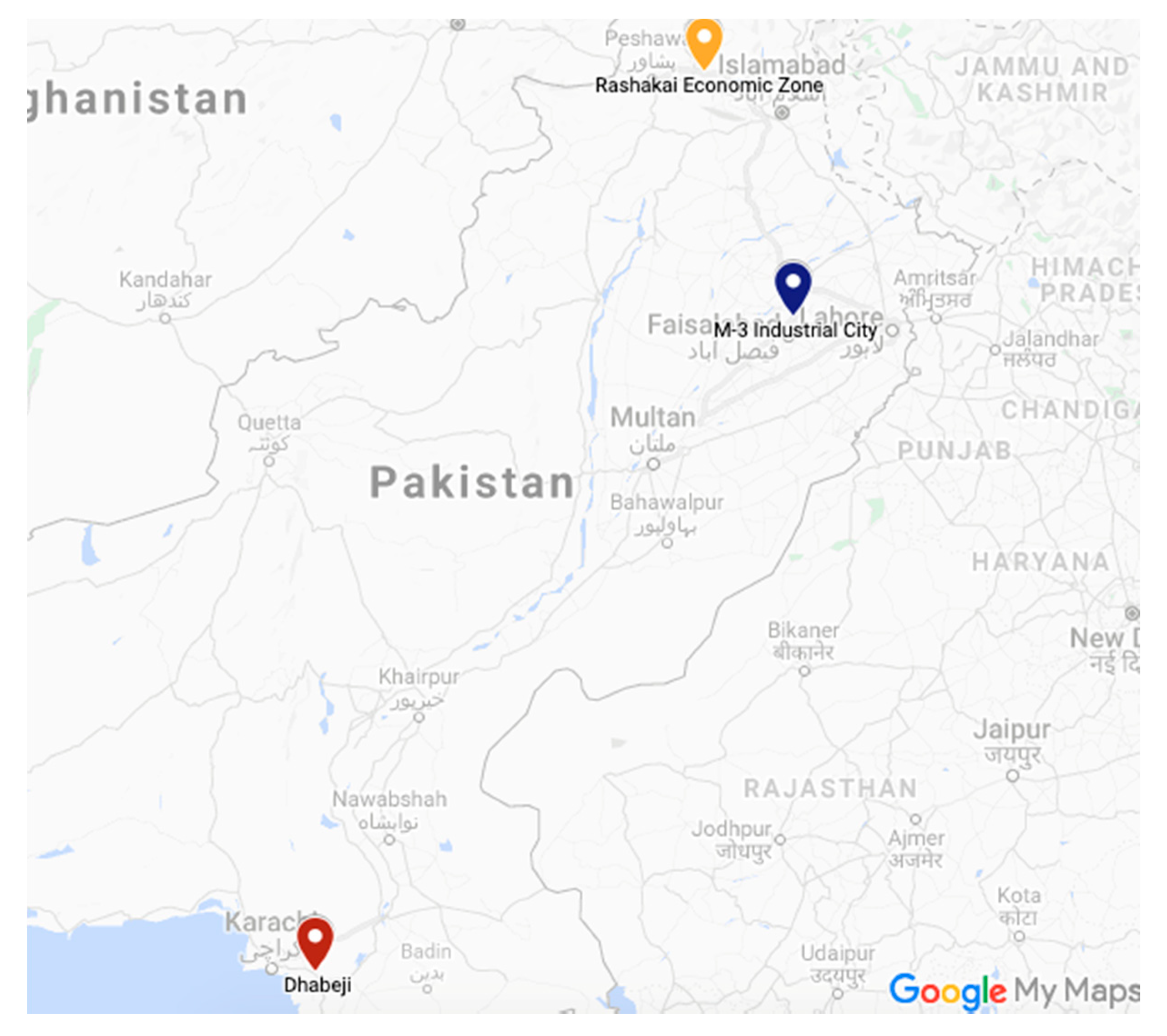
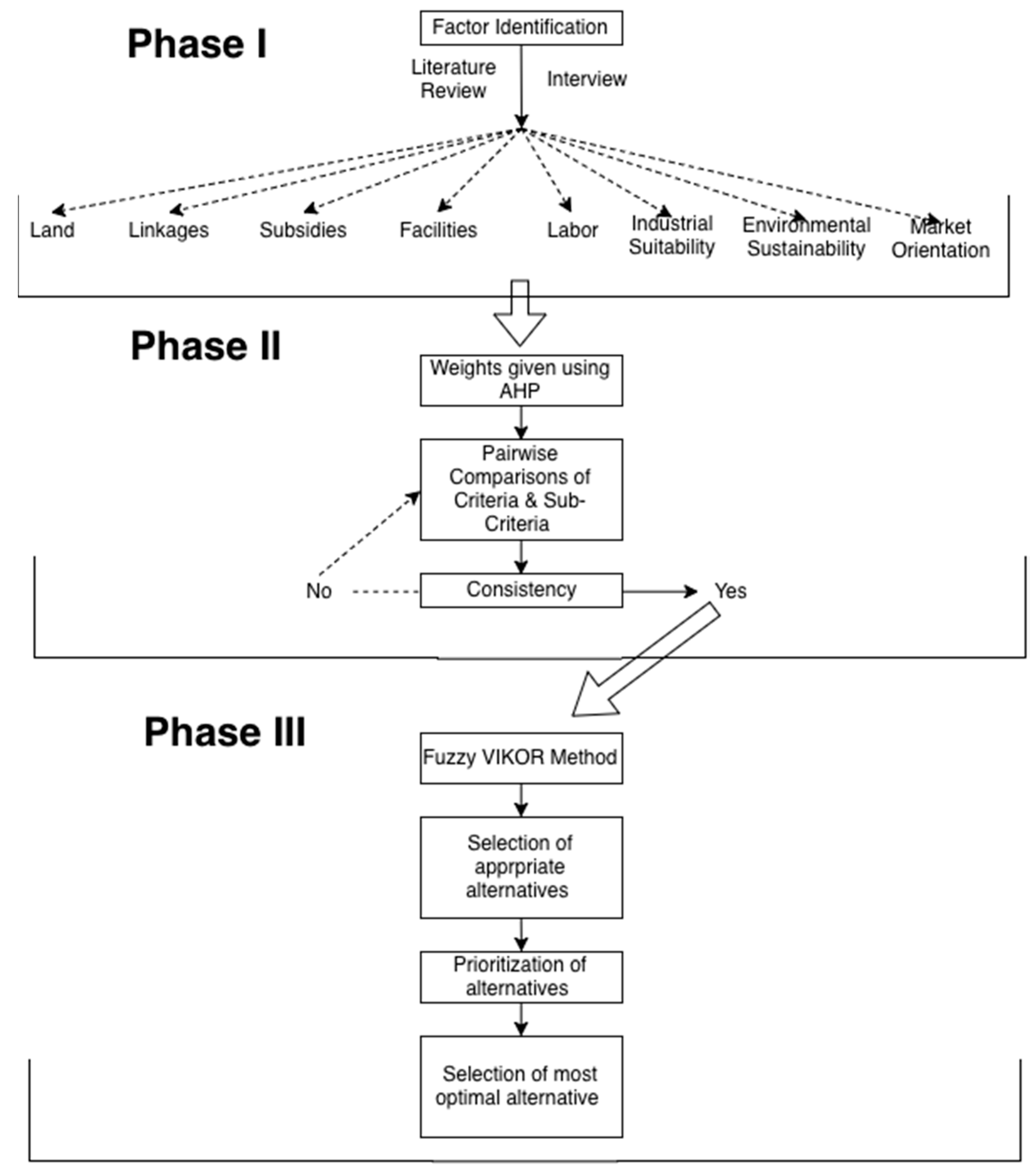
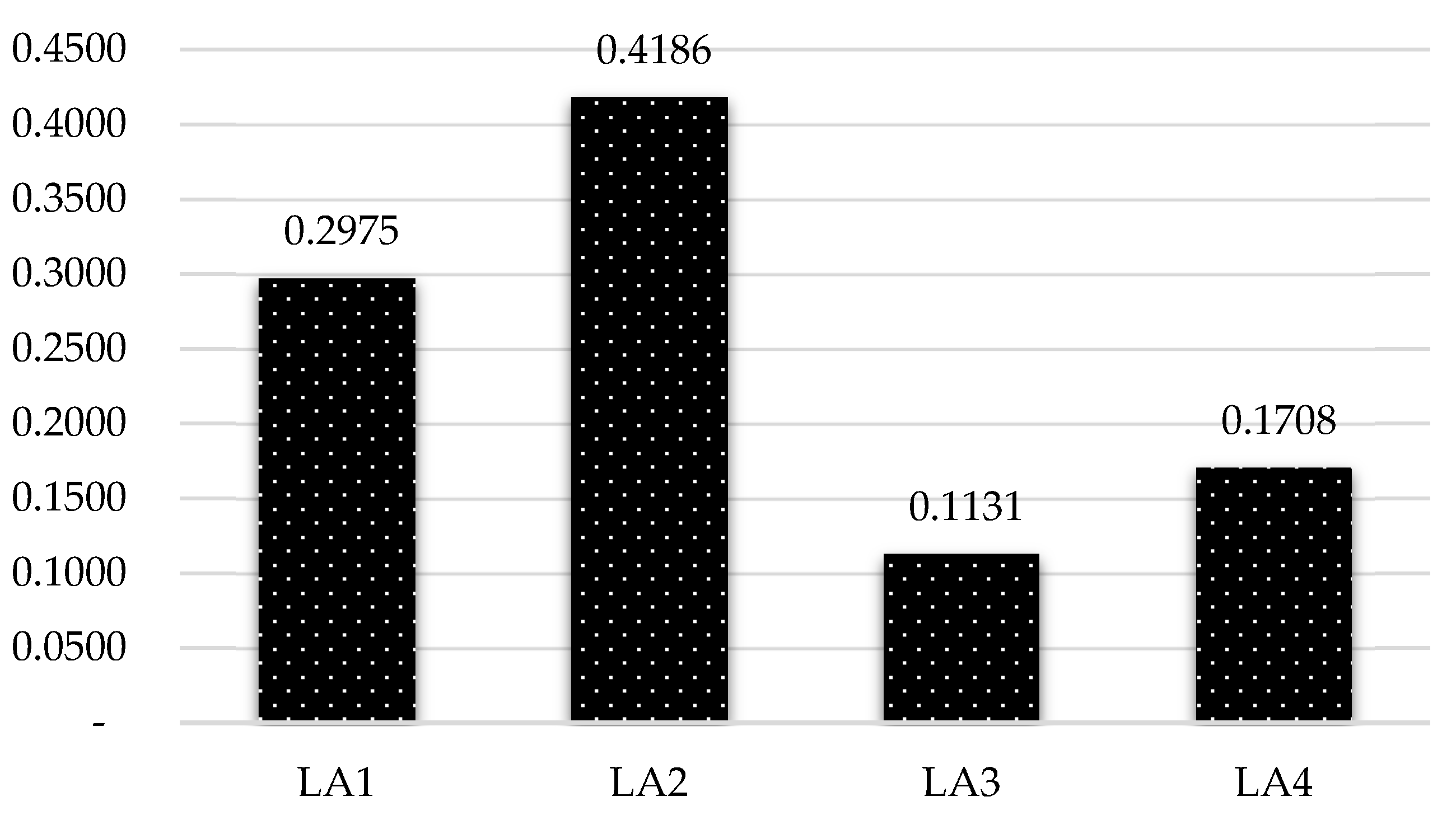
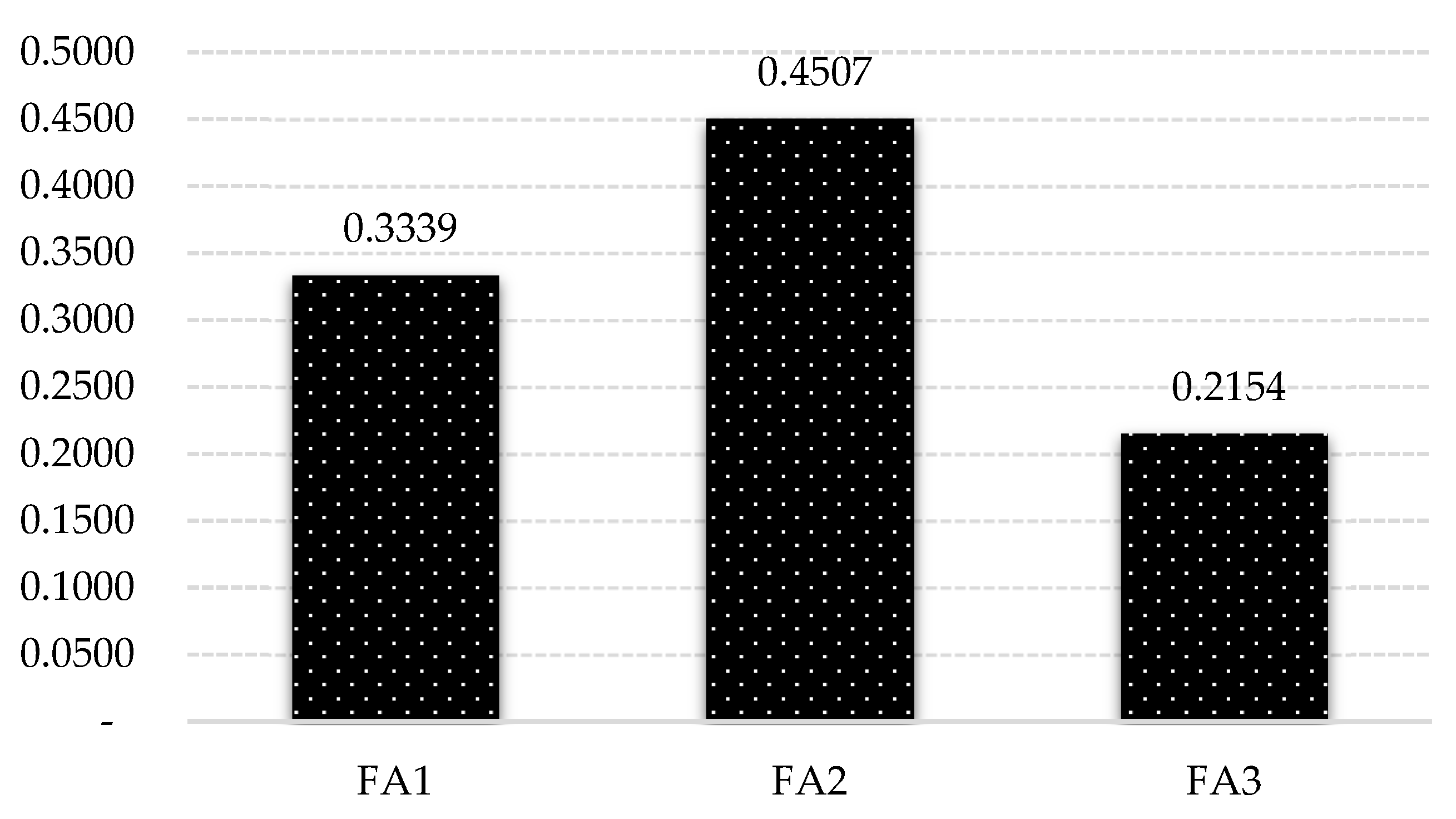
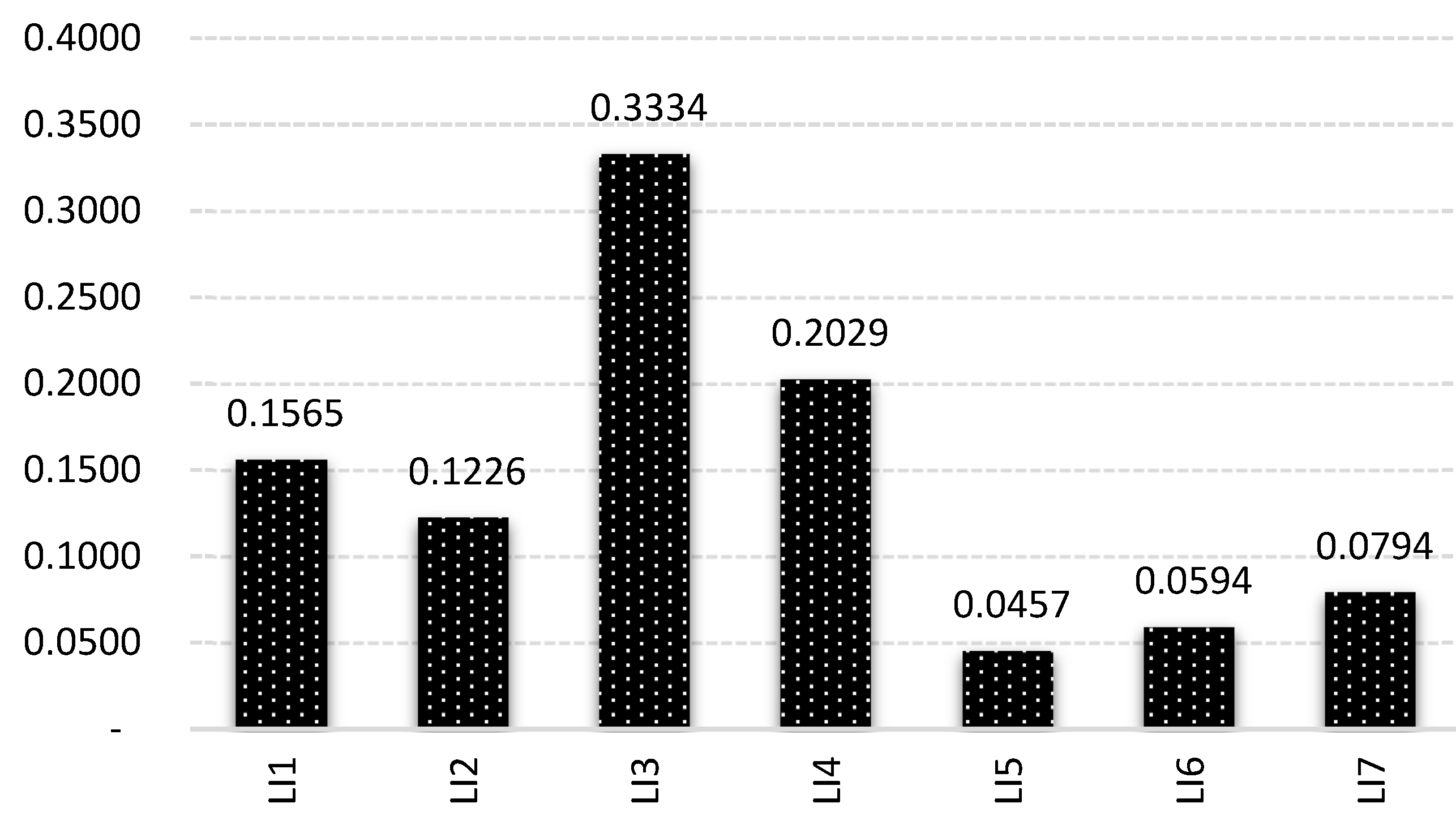
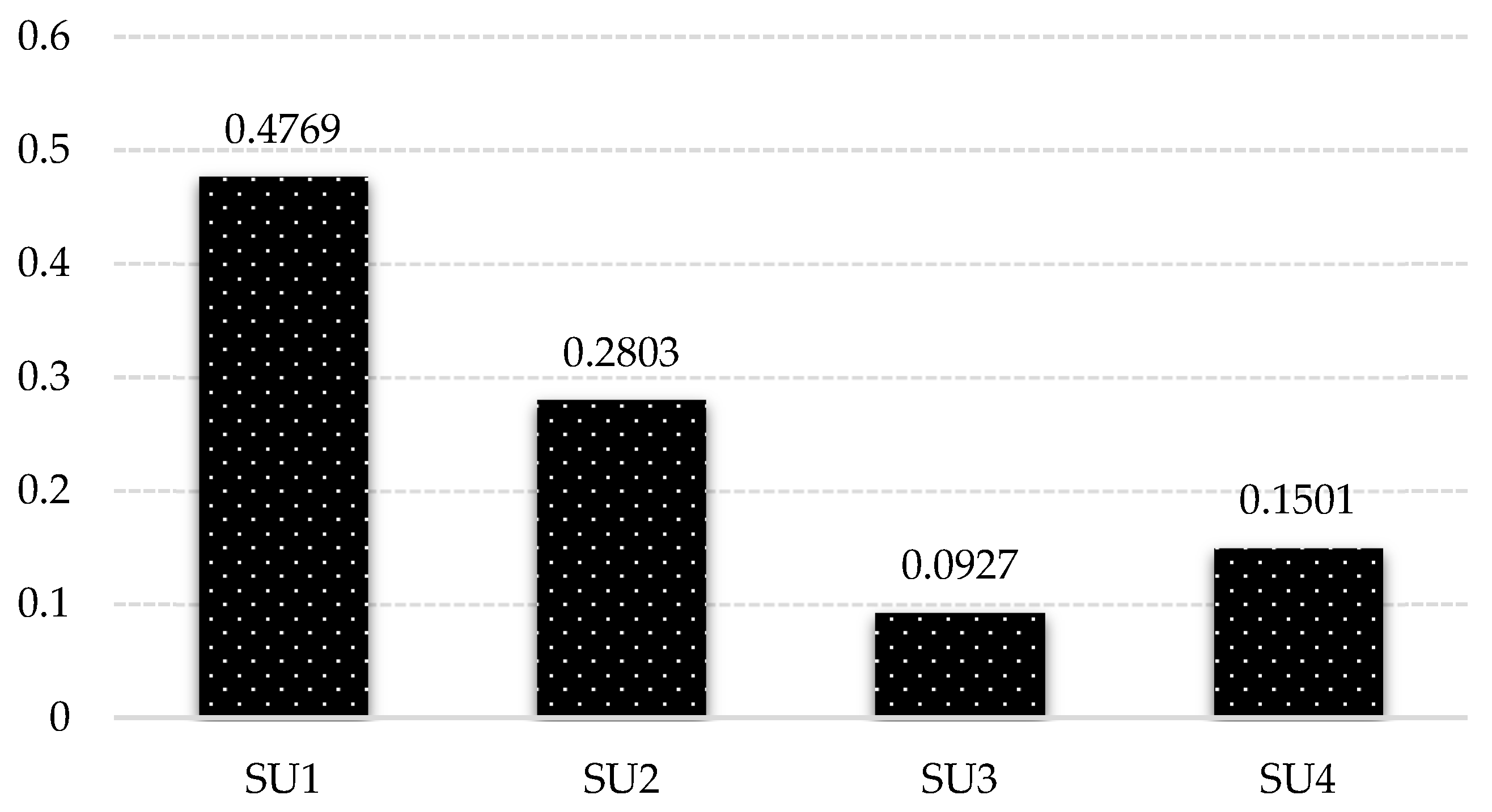
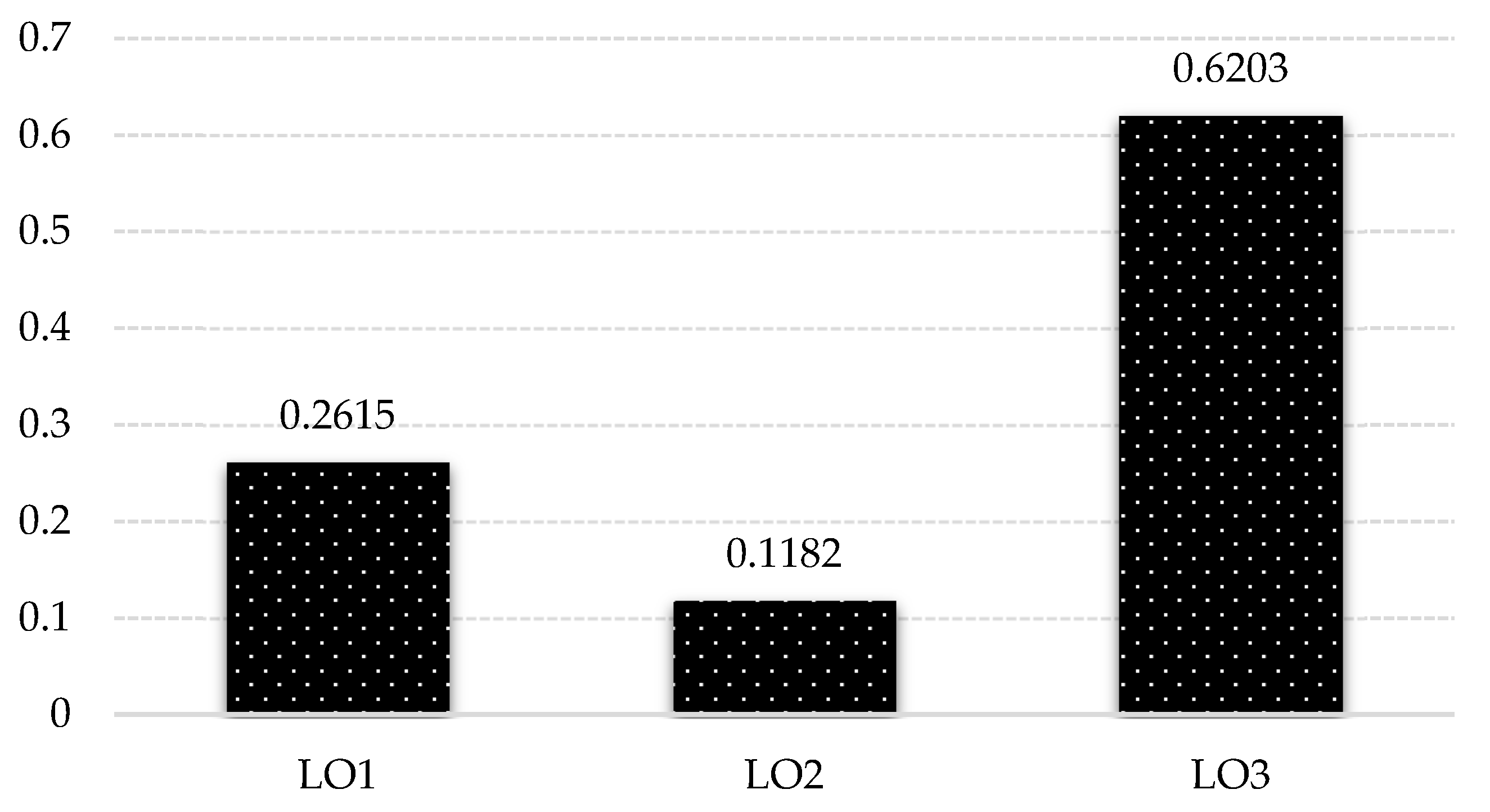

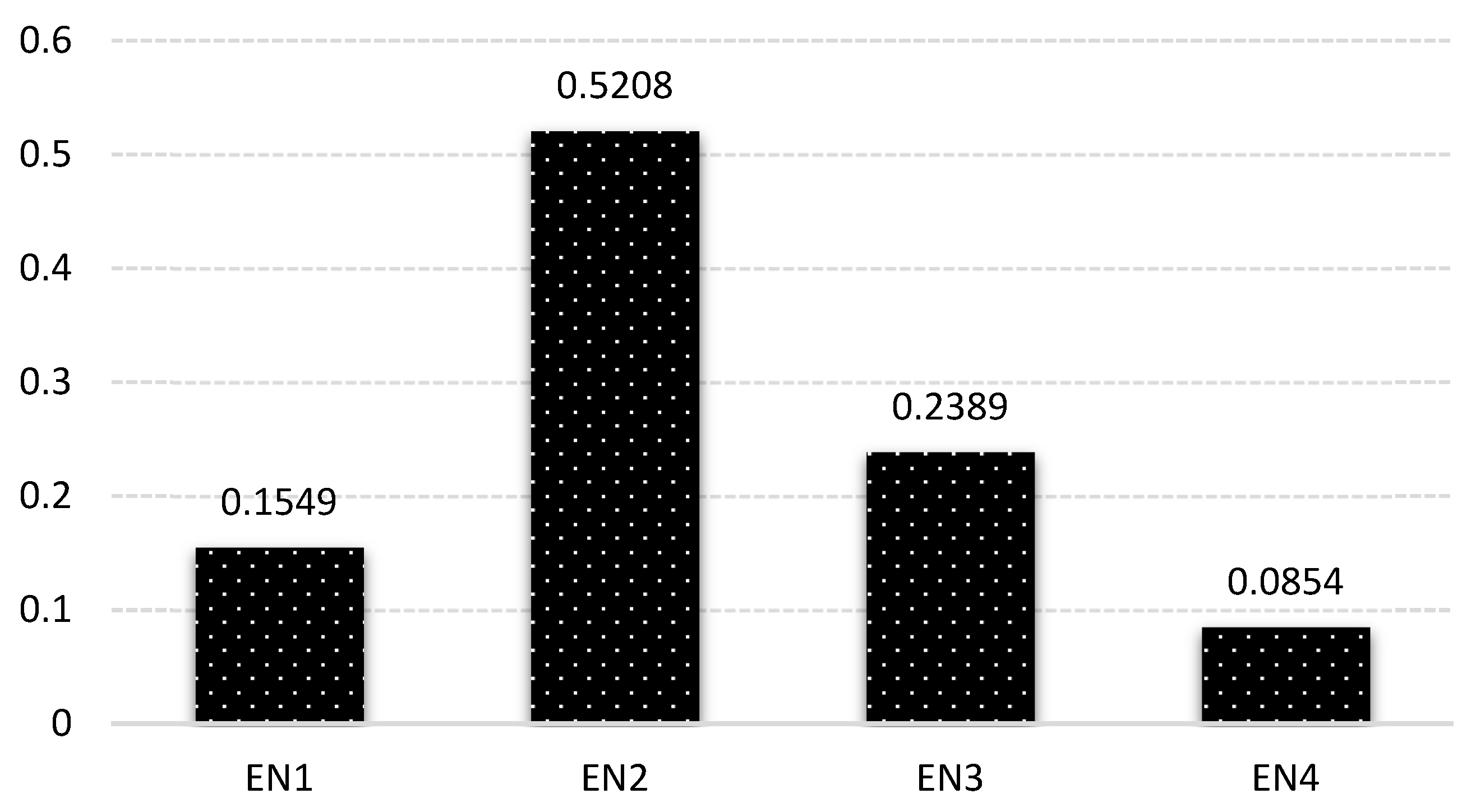
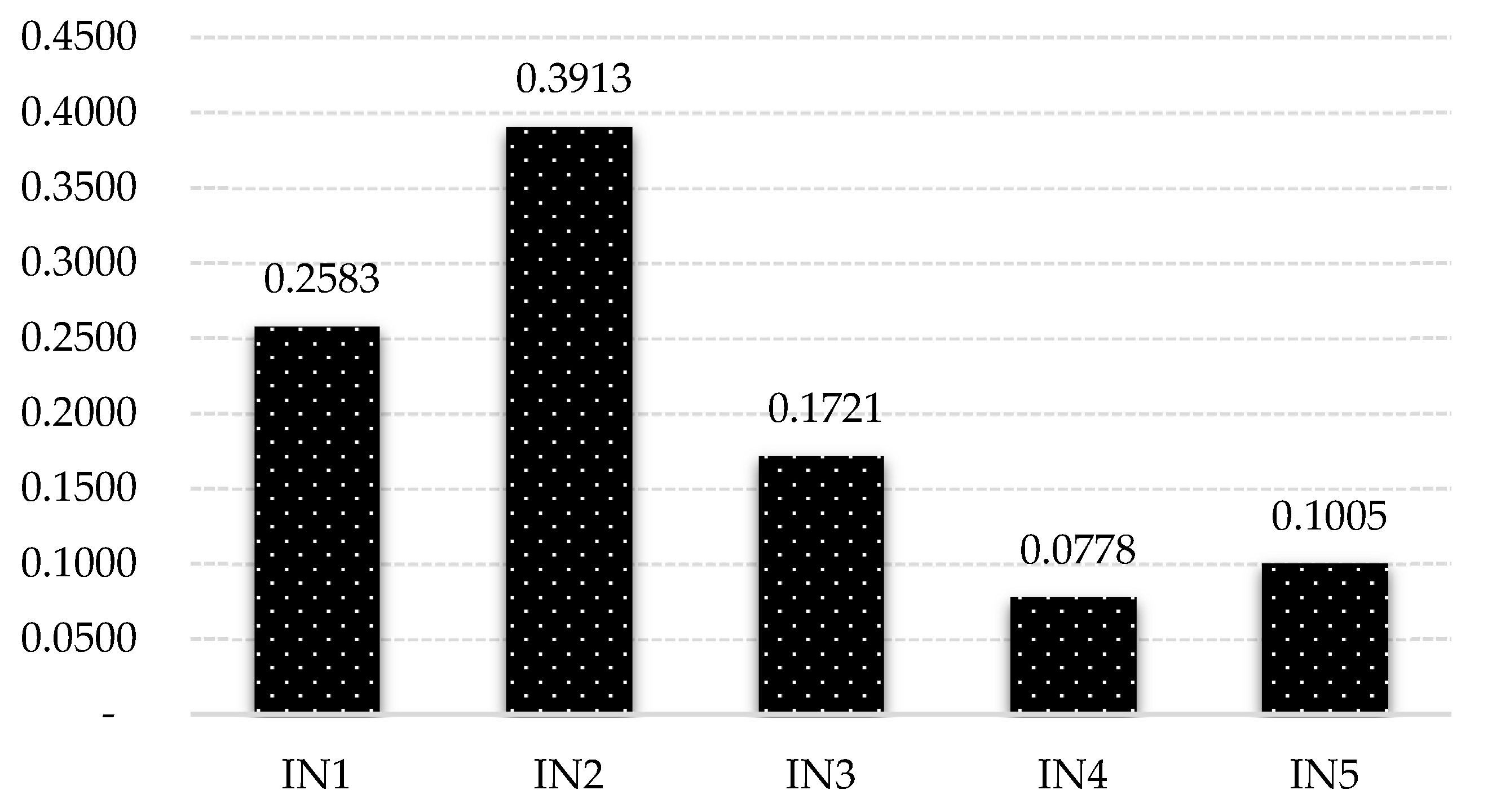
| Author | Research Problem | Type of SEZ | Location | Methodology | Results |
|---|---|---|---|---|---|
| Singh and Sanjiv [15] | Effect of location as a success factor for gross state domestic product | SEZs | Madhya Pradesh, India | Chi-Square Test | Identification of 8 key success factors and positive impact |
| Aggarwal [16] | The integrated institutional framework of SEZs | Export Processing Zone and SEZs | Most Successful: China, Korea, Taiwan Not So Successful: Cambodia, India, Costa Rica, Poland, Egypt Least Successful Countries: Kenya, Liberia, Mauritius | Three-pillared analytical framework | The study presents the success factors and development outcomes of SEZs. The study unveils that well-structured approach aligning the SEZ with broader development strategy, executes it effectively, and continuously evaluates and maneuvers over time makes the SEZ-led economic transformation successful |
| Kim [17] | Assessment of green SEZ policies and green growth model of development. | SEZs Low-carbon industrial zones Eco-industrial parks, | China | Case Study | The study identified key success factors, lessons, and challenges for the Chinese government policy regarding the establishment of the SEZs while introducing the themes of circular economy and green industrial transition |
| Qinghe et.al [18] | The Chinese model of Using SEZ for regional development instead of windows or experimental field | SEZs | China | Empirical Analysis | Identification of New special zones and related policies for polarization and produce diffusion effects, which has become a new regional developmental model |
| Zeng [9] | Global lessons of the use of SEZs for structural transformation, effectiveness of zones in promoting private-sector development, and risks of adopting SEZ policies in low-income and developing countries | SEZ Industrial Parks | China Singapore India Mexico Bangladesh Srilanka Honduras | Empirical Analysis | The zone should be implemented properly considering a country’s specific situation. Also, zones are not a one-fit development instrument. |
| Zeng [19] | A brief overview of the experiences of SEZ in China and Africa with a focus on the key lessons that Africa can learn from China | SEZs | China and Africa | Empirical Analysis | The Chinese experience of establishing SEZs and industrial parks has been successful and productive. It also provides recommendations on how the Chinese experiences could be used to unleash the power of SEZs in Africa |
| Wong and Buba [20] | SEZ Literature and Impacts Stocktaking of existing zones Drivers of SEZ Performance | SEZs | 22 Emerging Countries | Desk Review Enterprise Survey (ES) dataset ES Questionnaire Regression Analysis | SEZs’ overall economic dynamism is not different from the rest of the country. High-tech sectors have performed worse than those in low-cost, labor-intensive sectors |
| Qadir and Liang [21] | A brief overview of the experiences of SEZ in China and Central Asia with a focus on the key lessons that Central Asia can learn from China | SEZs | China Kazakhstan Kyrgyzstan | Empirical Analysis | Provided critical success factors and lessons learned from Central Asia and China |
| No. | Name | Characteristics |
|---|---|---|
| 1. | Free Trade Zones (FTZ) | FTZs duty-free fenced in designated areas providing storage, and distribution facilities for trade, transshipment, and re-export operations. |
| 2. | Export Processing Zones (EPZ) | EPZs are industrial areas specializing in 1 industry or a combination primarily focusing at foreign markets. |
| 3. | Comprehensive Special Economic Zones (SEZs) | Comprehensive or Multifunction SEZs are large industrial amalgamations having industrial, service and urban-amenity operations. |
| 4. | Industrial Parks (IP) | Industrial Parks are at large manufacturing or R&D based sites that work at a smaller scale as compare to comprehensive SEZs. |
| 5. | Enterprise specific—single factory zones | Provide incentives to individual enterprises regardless of where their location is, and they are not required to be located in any specific geographical location |
| 6. | Bonded areas | These are secured territories, in which goods stored, manipulated, or can undergo manufacturing operations without payment of duties. The major difference is that a “bonded area” is subject to customs laws and regulations whereas an FTZ is exempted. |
| 7. | High tech zones | These are aimed at promoting R&D activities and advancement in technology or industries based on science, e.g., pharmaceutical. |
| 8. | Eco-industrial zones or parks | These SEZs focus on sustainability concerning waste reduction and improving the environmental performance of companies. |
| Criteria | Key Success Factor | Dhabeji | Rashakai | Faisalabad |
|---|---|---|---|---|
| Location | Size | 1000 Acre | 1000 Acre | 3000 Acre |
| Ease of acquisition | Difficult | Easy | Difficult | |
| Setup cost | Low | Low | High | |
| Stamp Duty | 3% | 2% | 3% | |
| Linkages | Railways | 5 km | No | 0 km |
| Air | 80 km | 50 km | 66 km | |
| Sea | 85 km | No | No | |
| Dry port | No | 65 km | 0 km | |
| Motorways/Highway | 5 km | 0 km | 0 km | |
| Proximity to market | 50 km | 10 km | 25 km | |
| Proximity to raw materials | 100–200 km | 10–150 km | 0–50 km | |
| Labor Force | Level of skill | High Skill | Low Skill | High Skill |
| Unemployment rate | 4.92% | 7.16% | 5.97% | |
| Wage rate (Skilled) | PKR 7437.12 | PKR 7738.31 | PKR 13,295.67 | |
| Facilities | Fresh Water availability | Low | High | High |
| Waste disposal facility | No | No | Yes | |
| Scientific Labs | No | Yes | Yes | |
| Incentives | Mode of payment | Full Payment | Installment | Installment |
| Markup Discount | 100% KIBOR | 5% | 0% | |
| Land Price Discount | 0% | 25% | 0% | |
| Transport Subsidy | 0% | 25% | 0% | |
| Industrial Suitability | Iron & Steel | Yes | No | Yes |
| Mines/Minerals | No | No | No | |
| Textiles | Yes | Yes | Yes | |
| Pharmaceutical | Yes | No | Yes | |
| Agriculture | No | Yes | Yes | |
| Environmental Sustainability Status | Land Loss | Low | Medium | Medium |
| Air Pollution | High | Low | High | |
| Energy Consumption | High | Medium | High | |
| Water Stress | High | Low | High | |
| Market Orientation | Export | No | Yes | Yes |
| Value Upgradation | Yes | No | Yes | |
| Domestic Market Development | Yes | Yes | Yes |
| Designation | Education | Experience | Age | Association |
|---|---|---|---|---|
| Professor | PhD | 15 Years | 55 years | COMSATS University |
| Associate Professor | PhD | 12 Years | 45 Years | National University of Science & Technology |
| Industrialist | MSc | 30 Years | 52 Years | All Pakistan Textile Mills Association |
| Industrialist | BSc | 10 Years | 32 Years | Hattar Industrial Zone |
| Industrialist | BA | 13 Years | 36 Years | Textile City, Faisalabad |
| Industrialist | BSc | 18 Years | 40 Years | Port Qasim Industrial Zone |
| Environmentalist | PhD | 7 Years | 32 Years | Ministry of Environment |
| Environmentalist | MSc | 14 Years | 42 Years | Lahore Conservation Society |
| Zone Planner | MSc | 12 Years | 34 Years | Khyber Pakhtunkhwa Economic Zone Development & Management Company |
| Under Secretary | MA | 8 Years | 32 Years | Ministry of Planning & Reforms |
| CEO | MSc | 7 Years | 31 Years | Opportunity Think Tank |
| Researcher | PhD | 5 Years | 34 Years | CPEC Center of Excellence |
| Definition | Numerical Value |
|---|---|
| Equal | 1 |
| Moderately important | 3 |
| Strong important | 5 |
| Very strong importance | 7 |
| Extremely important | 9 |
| Intermediate values | 2, 4, 6, and 8 |
| Reciprocal values |
| Main Criteria | Weight | Rank |
|---|---|---|
| Land (LA) | 0.2251 | 1 |
| Environmental Sustainability (EN) | 0.0633 | 7 |
| Subsidies (SU) | 0.1658 | 3 |
| Labor (LO) | 0.0992 | 5 |
| Linkages (LI) | 0.1804 | 2 |
| Industrial Suitability (IN) | 0.0778 | 6 |
| Facilities (FA) | 0.1412 | 4 |
| Market Orientation (MA) | 0.0471 | 8 |
| Sub-Criteria | Weight | Rank |
|---|---|---|
| Ease of acquisition (1) (LA2) | 0.0942 | 1st |
| Mode of payment (1) (SU1) | 0.0791 | 2nd |
| Setup Cost (2) (LA1) | 0.0670 | 3rd |
| Fresh Water availability (1) (FA2) | 0.0637 | 4th |
| Level of Skill (1) (LO3) | 0.0615 | 5th |
| Proximity to market (1) (LI3) | 0.0602 | 6th |
| Waste Disposal Facility (2) (FA1) | 0.0472 | 7th |
| markup discount (2) (SU2) | 0.0465 | 8th |
| Size (3) (LA4) | 0.0385 | 9th |
| Motorways/Highway (2) (LI4) | 0.0366 | 10th |
| Water Stress (1) (EN2) | 0.0329 | 11th |
| Textiles (1) (IN2) | 0.0305 | 12th |
| Export (1) (MA1) | 0.0304 | 13th |
| Scientific Labs (3) (FA3) | 0.0304 | 14th |
| Proximity to raw materials (3) (LI1) | 0.0282 | 15th |
| Wage rate (2) (LO1) | 0.0259 | 16th |
| Stamp Duty (4) (LA3) | 0.0254 | 17th |
| Land price Discount (3) (SU4) | 0.0249 | 18th |
| Railways (4) (LI2) | 0.0221 | 19th |
| Agriculture (2) (IN1) | 0.0201 | 20th |
| Transport Subsidy (4) (SU3) | 0.0154 | 21st |
| Air Pollution (2) (EN3) | 0.0151 | 22nd |
| Sea (5) (LI7) | 0.0143 | 23rd |
| Iron & Steel (3) (IN3) | 0.0134 | 24th |
| Unemployment rate (3) (LO2) | 0.0117 | 25th |
| Dry port (6) (LI6) | 0.0107 | 26th |
| Value Upgradation (2) (MA3) | 0.0106 | 27th |
| Energy Consumption (3) (EN1) | 0.0098 | 28th |
| Air (7) (LI5) | 0.0083 | 29th |
| Pharmaceutical (4) (IN5) | 0.0078 | 30th |
| Domestic Market (3) (MA2) | 0.0061 | 31st |
| Mines/Minerals (5) (IN4) | 0.0061 | 32nd |
| Land Loss (4) (EN4) | 0.0054 | 33th |
| Economic Zone | |||
|---|---|---|---|
| Dhabeji | 0.1261 | 0.0150 | 0.0208 |
| Faisalabad | 0.1642 | 0.0136 | 0.0132 |
| Rashakai | 0.1864 | 0.0143 | 0.0318 |
| Economic Zone | Rank | |
|---|---|---|
| Faisalabad | 0.0132 | 1st |
| Dhabeji | 0.0208 | 2nd |
| Rashakai | 0.0311 | 3rd |
© 2020 by the authors. Licensee MDPI, Basel, Switzerland. This article is an open access article distributed under the terms and conditions of the Creative Commons Attribution (CC BY) license (http://creativecommons.org/licenses/by/4.0/).
Share and Cite
Ahmed, W.; Tan, Q.; Solangi, Y.A.; Ali, S. Sustainable and Special Economic Zone Selection under Fuzzy Environment: A Case of Pakistan. Symmetry 2020, 12, 242. https://doi.org/10.3390/sym12020242
Ahmed W, Tan Q, Solangi YA, Ali S. Sustainable and Special Economic Zone Selection under Fuzzy Environment: A Case of Pakistan. Symmetry. 2020; 12(2):242. https://doi.org/10.3390/sym12020242
Chicago/Turabian StyleAhmed, Waqas, Qingmei Tan, Yasir Ahmed Solangi, and Sharafat Ali. 2020. "Sustainable and Special Economic Zone Selection under Fuzzy Environment: A Case of Pakistan" Symmetry 12, no. 2: 242. https://doi.org/10.3390/sym12020242
APA StyleAhmed, W., Tan, Q., Solangi, Y. A., & Ali, S. (2020). Sustainable and Special Economic Zone Selection under Fuzzy Environment: A Case of Pakistan. Symmetry, 12(2), 242. https://doi.org/10.3390/sym12020242








